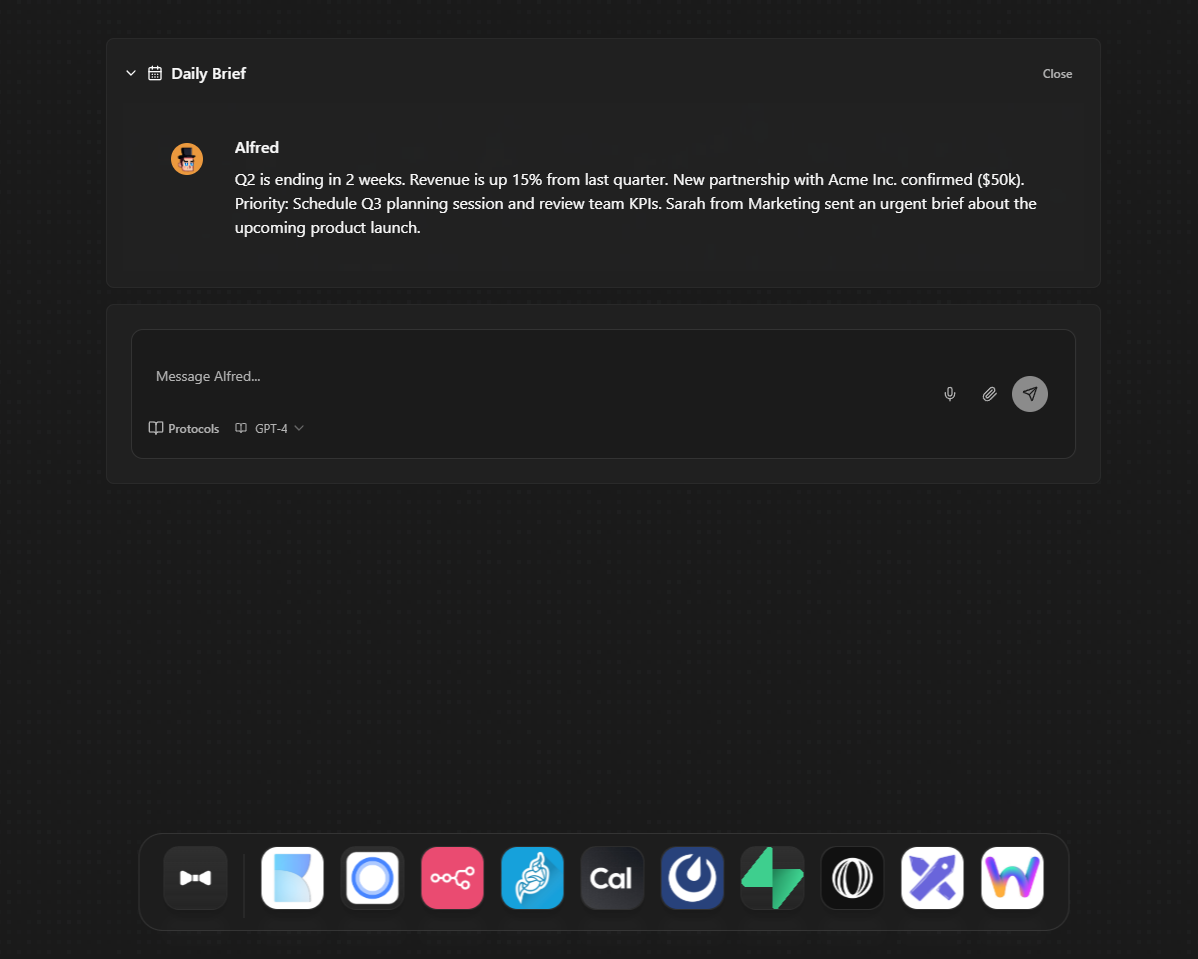I was halfway through my first coffee when a headline on CIO.com smacked me in the face:
“CIOs increasingly dump in-house POCs for commercial AI.”1
Gartner says the share of companies building their own AI fell from 50 % in 2023 to 20 % in 2024; IDC pegs the failure rate of AI proof-of-concepts at 88 %. “Juice isn’t worth the squeeze,” one consultant complained. AI projects are dead on arrival. That will raise eyebrows, questioning the entire idea of AI revolutionizing how we build and run stuff. I got questions from people like:
“David, I’m concerned that vibe-coding just the 2025 rerun of Shopify dropship bros?”
“Am I wasting my nights learning Lovable?”
I felt the knot too. I’d spent the weekend “vibe-building” Alfred —50 prompts, one half-broken deployment, and a TODO list the size of a redwood stump. Was I lumberjacking air?
Why the comparison feels right
1. The gold-rush pattern
2023 was prompt-fever. Boards screamed “Do AI something!” Teams spun up weekend hacks nobody could maintain. When the demos worked, execs grabbed the credit card and bought whatever “AI-enabled” stuff they could that quarter.
Same emotional arc as the Shopify T-shirt craze of 2019:
spike of hope → plateau of meh → marketplace flood.
2. Outsourcing the hard bits
Dropshipping outsourced inventory; vibe-coding outsources boilerplate.
While building vibing a scheduling tool I typed:
build an iCal parser that buckets conflicts by colorand watched the model spit out 170 lines of TypeScript I barely understood. Ten minutes later an error cascaded through six generated files. I’d off-loaded complexity, but with it I also lost control.
3. Thin moats, easy clones
A launch tweet + a screenshot + “Built in 24 hrs with ChatGPT” is catnip—until someone else clicks Remix in Replit and copies you pixel-for-pixel.
The moat isn’t the code; it’s the audience and execution speed—same as dropshipping.
Where the analogy breaks
This is where the hard data—and my personal experience—start to flip the story so I figured let’s take a look at the most common myths around vibe coding.
Myth #1 – “Vibe-coding is a fad.”
Two years in, GitHub Copilot is writing ~46 % of code in assisted files and cuts task time by up to 55 %.2
Fads don’t survive CFO diligence; Copilot just crossed 1.3 million paid seats.3 Yes, Copilot is increasingly difficult to use, but it’s not a standalone phenomenon. Cursor went to $100M ARR in a matter of months. 4 My favorite vibe coding app Lovable grew with a similarly crazy momentum. Now over 25,000 apps are being built on Lovable every single day. 5
I’m using Lovable to go through the early stages — the cumbersome stages — of building stuff faster. Not a fad—just a bigger chainsaw.
Oh and by the way let me tell you a secret: while 88% of AI PoC projects fail, that’s true for ALL PoC projects. That’s why they’re called PoC’s.
Myth #2 – “If it’s too good to be true, avoid it.”
Andrej Karpathy jokes, “I just see stuff, say stuff, run stuff, copy-paste stuff—and it mostly works.”6
The mostly is key. Vibe-coding works because I keep a plan.md in the repo. There’s nothing magical about that.
Myth #3 – “You’ll be helpless when bugs or hackers strike.”
Paste the stack trace into Cursor → get patch + unit test → CI green in minutes.
Semgrep Assistant now annotates pull requests with GPT-powered fixes, flagging OWASP Top-10 issues as you code.7 Semgrep
Lovable 2.0 automatically flags for security concerns as you build stuff. 8
That’s more safety net than most indie shops had before AI.
Myth #4 – “AI spits out 15 000 lines of spaghetti.”
Large models start dropping their context pretty quickly so they reward you for writing tiny, single-responsibility functions. I break a file whenever the model scrolls twice—my codebase is cleaner than last year and I’m not even writing it.
Myth #5 – “AI hallucinations will wreck my project”
When folks say an AI “hallucinates,” they just mean it sometimes makes things up—the way autocorrect swaps duck for a word you definitely didn’t type.
The fix isn’t magic; it’s three common-sense habits:
- Use a code spell-checker (linter).
Think red squiggles in Word. The moment the AI writes something impossible—say, calling a function that doesn’t exist—it gets flagged and never reaches production. Most vibe coding tools catch these automatically. - Run an automatic rehearsal before showtime.
I ask the model to write a tiny “does-this-still-work?” script before it writes the feature. If my booking app suddenly won’t take payments, that script fails and the change is blocked. - Get a proof-reader for every change.
Sometimes that’s a teammate; sometimes it’s a second AI model that reviews the diff and shouts, “Hold up—this could break log-in!” Only green-lighted changes make it live.
Researchers who measured projects that follow these three habits found the bug rate is basically the same as hand-written code—but the AI-assisted teams finished roughly twice as fast.9
So yes, the model can dream up nonsense. But if you build your apps with intent, you can avoid most of these issues.
Myth #6 – “You must master the basics before touching AI.”
Sure—but vibe-coding is the best interactive tutorial I’ve ever used. You can build stuff, then turn on Chat / Ask mode (depending on the tool you use) and ask to explain and teach you.
Yes there are a few things you need to know. ’s work around PDD (Prompt Driven Development, which is a grown up name for vibe coding) is extraordinary, so start there.
Key takeaways
1. Blueprint first. Write plan.md like a one-page PRD. Use Andrew’s PDD.
2. Commit every prompt cycle. git reflog is your time machine.
3. Generate the tests before the feature. Treat them as an executable contract.
4. Keep files snack-sized. If the model scrolls, split it.
5. Wire security from day 0. Semgrep, Dependabot, whatever—just bolt it in.
6. Measure token spend. GPT-4o coffee-money prompts add up; log usage.
7. Ship, watch users break it, iterate. Trees → lumber → cabin → warm fire.
So, is vibe-coding the new dropshipping?
Dropshipping slaps a new logo on someone else’s commodity. Vibe-coding creates IP every time you hit Run—business logic, UX flows, domain nuance. It’s not passive income; it’s active leverage.
Yes, the unit economics of software is changing, fundamentally and irreversibly. The ability to ship working code is not a competitive advantage anymore. The ability to reach your audience, create stellar UX, solve hard problems is.
My Alfred demo was operational after half a day of vibing.

I sent it off to my developer who can now implement it. You don’t have to go all the way. But sending a git repo instead of a Google Doc to your developer will make your execution speed 100x faster.
The only reason while we usually write documentation instead is because it’s faster, easier and requires less skill. But trust me, if you put together a prototype and send it off to your dev with a README.md they’ll love you for it.
So no, vibe-coding isn’t dropshipping.
It’s a nail-gun: loud, fast, and dangerous if you ignore the manual. If you can swing a hammer, a nail-gun just means the wall goes up before lunch.
Same deal with vibe-coding: the work is still carpentry—just faster, louder, and a little scarier the first time you pull the trigger.
https://www.cio.com/article/3965387/cios-increasingly-dump-in-house-pocs-for-commercial-ai.html ↩
https://github.blog/news-insights/product-news/github-copilot-x-the-ai-powered-developer-experience/?utm_source=chatgpt.com ↩
https://www.wired.com/story/fast-forward-ai-rewiring-coders-brains-github-copilot/?utm_source=chatgpt.com ↩
https://techcrunch.com/2024/12/19/in-just-4-months-ai-coding-assistant-cursor-raised-another-100m-at-a-2-5b-valuation-led-by-thrive-sources-say/ ↩
https://techcrunch.com/2025/02/25/swedens-lovable-an-app-building-ai-platform-rakes-in-16m-after-spectacular-growth/ ↩
https://x.com/karpathy/status/1886192184808149383?utm_source=chatgpt.com ↩
https://semgrep.dev/blog/2023/using-ai-to-write-secure-code-with-semgrep/ ↩
https://lovable.dev/blog/lovable-2-0 ↩
https://arxiv.org/pdf/2306.15033 ↩


